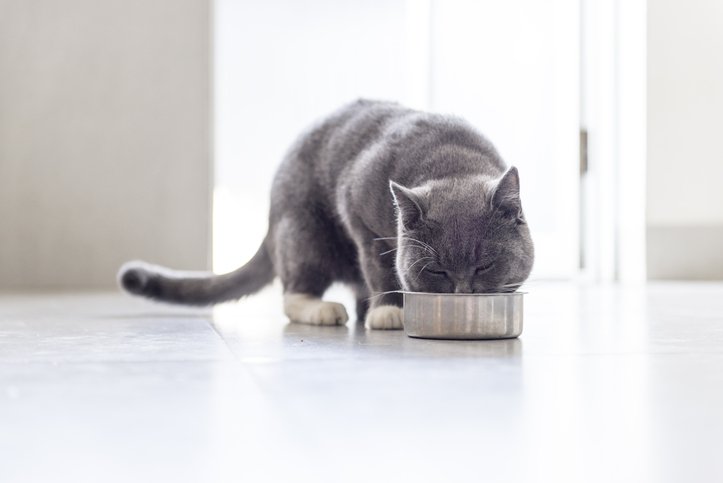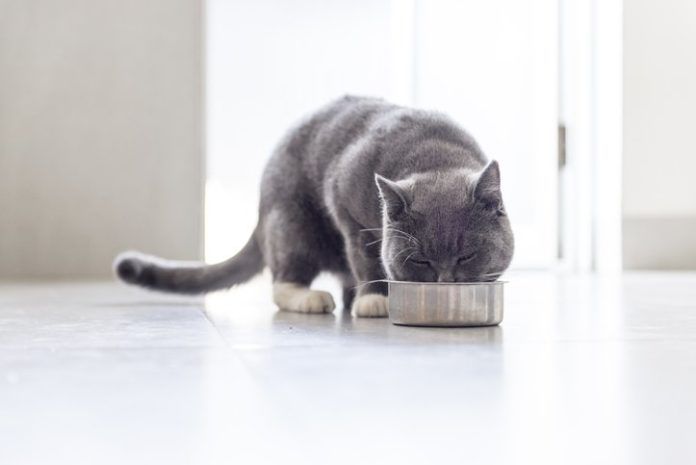
491245604 – Getty chendongshan
Many cat owners consider their pets to be part of the family, so it can be a natural extension to want to indulge their every whim. There are human foods that cats can eat – but a list of absolutely forbidden ones, as well. In a multi-pet household, some might think that cats have similar nutritional requirements as dogs, but this is not the case. Each species requires their own well-balanced diet designed just for them.
What Can Cats Not Eat
Any food not specifically formulated for cats can affect their digestive system, causing vomiting, diarrhea, or loss of appetite. But the foods of concern include: alcohol, coffee, tea, energy drinks, and chocolate, which is bad for cats.
Other things you need to be mindful of include dairy products because some cats become lactose-intolerant as they age. Cat owners often ask if cats can eat eggs, cheese or rice, but it’s a good idea to consult with your vet before adding these foods to your cat’s diet (an occasional treat is fine, however). You should avoid giving an excess of fat trimmings, and never any raw chicken and raw fish.
Tuna-formulated cat foods are fine. But tuna sold for human consumption can sometimes cause digestive upset, so stick with tuna canned in water and don’t substitute this as a regular meal.
All members of the onion family can cause problems if ingested in sufficient quantities. A little bit of onion or garlic is not likely to cause any problems. It’s more of a concern if ingestion occurs on a regular basis, such as feeding a sickly cat a flavor of baby food that contains onion or garlic.
Cat owners who have dogs often ask if cats can eat grapes. While cats are not likely to eat these foods, dogs can suffer kidney failure, so it’s best not to risk your cat or dog’s health if you live in a multi-pet household.
Human Foods for Cats
According to Cailin Heinze, VDM, DACVN, a veterinary nutritionist at Tufts University College of Veterinary Medicine, cats (and dogs) should receive no more than 10% of their daily calories from treats or snacks – or risk obesity. Tiny pieces of vegetables and fruits can be a great way to provide a low calorie healthy snack. Here are some healthy options to try:
Fruits – apples, banana, cantaloupe, strawberries, blueberries, watermelon, honeydew melon.
Veggies: carrots, green beans, sweet red peppers, broccoli, tomatoes, green peas, zucchini, celery, asparagus.
Low-fat meat options: cooked ground turkey, baked chicken breast.
Provide Immediate Care
If you suspect your cat has eaten any foods that are deemed dangerous, try to determine how much she may have consumed. Call your vet for advice – if it’s after hours, you can dial the ASPCA’s Animal Poison Control hotline at 888-426-4435. This is especially important if your cat is displaying symptoms such as muscle tremors or repeated vomiting.
Treatment will involve supportive care until the symptoms resolve. This can involve hospitalization, IV fluids, blood tests, or other measures.
The best prevention is to keep your food out of reach of your cat. (An advantage of not giving your cat table food is the prevention of begging behavior.) But if you choose to give your cat human food on occasion, follow these guidelines: The food should only be considered a treat and only given on occasion to prevent gastrointestinal upset and/or nutritional imbalances.
Most important, if you wouldn’t eat it, don’t feed it to your cat. If you wouldn’t eat the food raw, then your cat shouldn’t either. The same goes for food that may be past its prime, such as last week’s leftovers.




